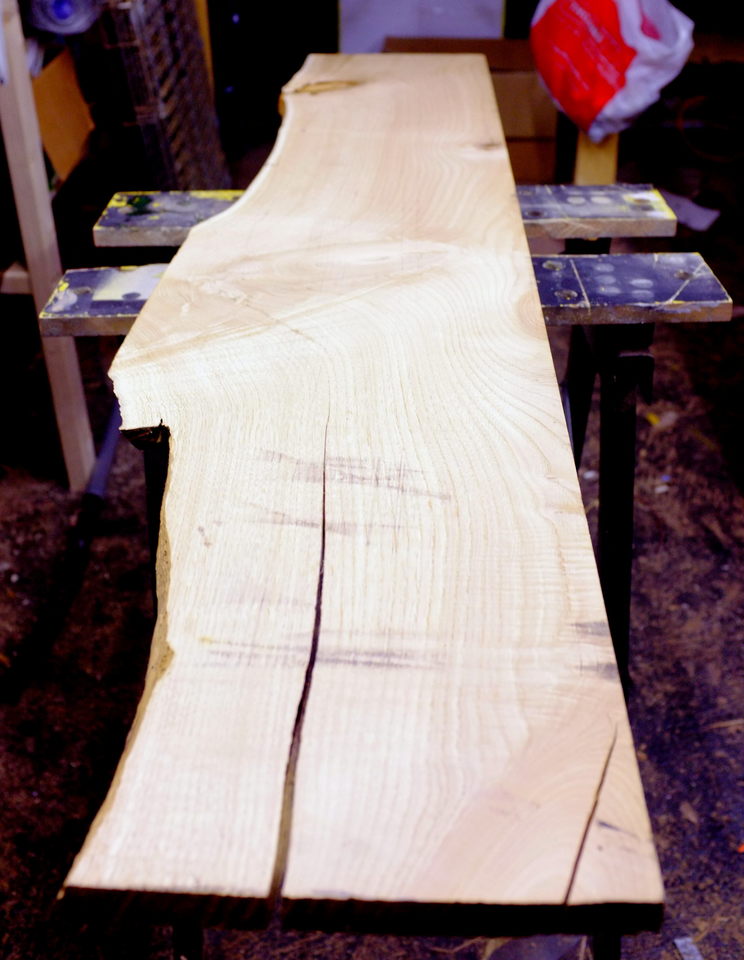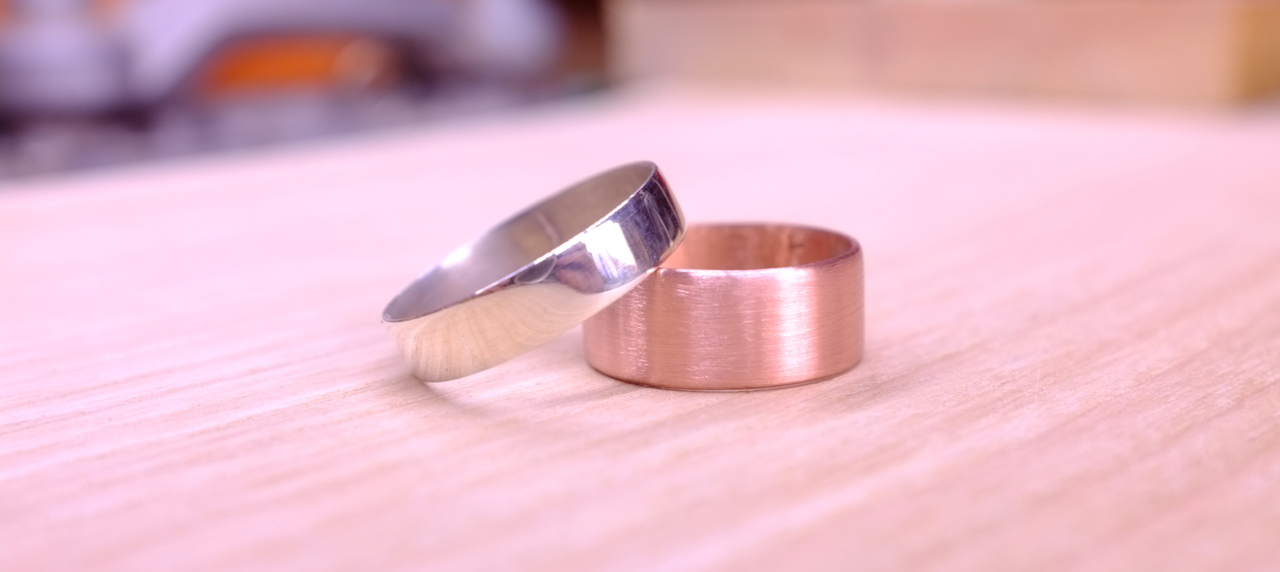Shiny! This simple ring is a great way to start to learn how to work with metal. I've tried not to use too many specialist tools, so this should be - hopefully - helpful for beginners. Things you will need: metal, silver solder, blowtorch, hacksaw, emery cloth (or wet-and-dry paper), hammer. Things you don't need but will make life easier: file, solder flux, nylon/rawhide mallet, power drill/lathe, ring mandrel, ball pein hammer. First up, metal. Almost anything you can buy in sheet form is OK, I'm using copper because it's cheap and fairly easy to work with. Brass would be another good option, maybe even silver if you're feeling wealthy. I buy my metals from Cookson Gold in the UK, other suppliers are available. Note: aluminium is not suitable, it melts at a lower temperature than the solder does. Using some Maths ( 2 x pi x (r + metal thickness) ), or this useful calculator , work out how big you need your blank to be, and mark and cut. I'm




